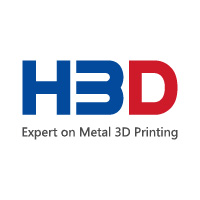Metal 3D Printing Revolution in Orthopedics-Redefining Implant Customization

The field of medical orthopedics has witnessed a revolutionary transformation with the integration of cutting-edge technologies. Among these groundbreaking advancements, metal 3D printing has emerged as a game-changer, enabling the production of patient-specific implants and innovative orthopedic solutions. At HBD, we take pride in our contribution to this transformative journey with the HBD 350 Metal 3D Printer. In this article, we delve into the remarkable impact of the HBD 350 in medical orthopedics, exploring its various applications, features, and advantages that set it apart as a leader in additive manufacturing for orthopedic devices.
Industry Market Data
The global orthopedic devices market size was valued at USD 40.9 billion in 2021 and is expected to expand at a compound annual growth rate (CAGR) of 3.1% from 2022 to 2030. Market growth can be attributed to the high incidence of orthopedic disorders, such as degenerative bone disease, as well as the growing aging population and the rising number of road accidents. Furthermore, the early onset of musculoskeletal disorders, caused primarily by a sedentary lifestyle and obesity, is projected to fuel market growth. According to data published by the Global Burden of Disease in 2021, musculoskeletal conditions affect about 1.71 billion people in the world. Hence, an increase in musculoskeletal disorders is likely to drive the market from 2022 to 2030.

Application Cases of Metal 3D Printing Technology in Medical Orthopedics
1. Patient-Specific Implants: Metal 3D printing allows for the creation of patient-specific implants tailored to an individual’s unique anatomy. Surgeons can now design implants that perfectly match the patient’s bone structure, ensuring a precise fit and minimizing the risk of complications. This level of customization has greatly improved patient outcomes and reduced the need for extensive modifications during surgery.

2. complex lattice structures: With metal 3D printing, orthopedic engineers can design and fabricate complex lattice structures within implants. These lattice structures offer a high strength-to-weight ratio, allowing for the creation of lightweight yet durable implants. These implants promote bone ingrowth, providing better stability and integration with the patient’s natural bone.


3. Revision Surgeries and Implant Adaptations: In cases where patients require revision surgeries or adjustments to existing implants, metal 3D printing allows for the creation of bespoke components. Surgeons can modify and adapt existing implants or create new ones to match changes in the patient’s condition over time.

4. Complex Joint Replacements: Metal 3D printing technology has enabled the design and manufacture of more complex joint replacements, such as custom hip or knee joints. These implants can better replicate the natural joint movement, resulting in improved patient comfort and mobility.


5. Cranial and Spinal Implants: Metal 3D printing has been instrumental in creating custom cranial and spinal implants for patients with skull defects or spinal injuries. These implants provide precise contouring and alignment, critical for neurological and orthopedic recovery.


In summary, metal 3D printing technology has revolutionized medical orthopedics by offering unprecedented customization, improved implant designs, and enhanced patient outcomes. As this technology continues to advance, we can expect even more innovative applications and groundbreaking solutions in orthopedic care.
Basic Features of the HBD 350 Metal 3D Printer
1. Exceptional Precision: The HBD 350 Metal 3D Printer offers unparalleled precision in manufacturing orthopedic implants, ensuring a perfect fit and improved patient outcomes.
2. Wide Material Compatibility: The printer’s ability to work with various medical-grade metal alloys provides orthopedic professionals with the flexibility to choose the most suitable materials for specific patient needs.
3. Enhanced Efficiency: HBD 350 leverages advanced printing technology to optimize production time, streamlining the manufacturing process and reducing lead times for orthopedic devices.
4. Customization and Personalization: By enabling patient-specific implants and custom designs, the HBD 350 empowers orthopedic surgeons to offer personalized solutions, enhancing patient satisfaction and post-operative recovery.
5. Regulatory Compliance: The HBD 350 adheres to stringent industry standards, ensuring that orthopedic implants produced are compliant with regulatory requirements, guaranteeing safety and quality.
The HBD 350 Metal 3D Printer has redefined the landscape of medical orthopedics, ushering in a new era of customized and patient-specific implants. With its precision, versatility in material compatibility, and unmatched efficiency, the HBD 350 is revolutionizing orthopedic care, providing patients with tailored solutions that improve their quality of life.

At HBD, we remain committed to advancing additive manufacturing and its applications in the medical industry. Through the HBD 350 Metal 3D Printer, we continue to empower orthopedic professionals with the tools they need to innovate, improve patient care, and shape the future of medical orthopedics. As we push the boundaries of technology, we aim to lead the way toward a more personalized, efficient, and patient-centric approach to orthopedic care.
 English
English  Français
Français

